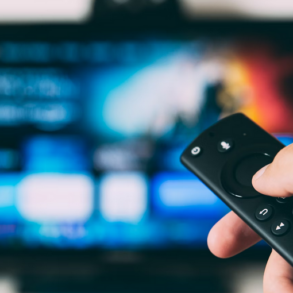Is your social media feed a little bland these days? Full of ads and the same old content?
What about your streaming service recommendations? Feel like you’ve seen everything and are just getting more of the same?
Theoretically, algorithms — the complex rules and calculations that determine what you see in your feeds — are meant to personalise your online experiences.
But best-selling tech author Kyle Chayka tells ABC RN’s Future Tense that algorithms are flattening our culture and fostering dull conformity.
So just how insidious have algorithms become? And what are the repercussions of this?
A lot less social
Chayka believes tech companies have intentionally, inconspicuously and slowly built up the level of algorithmic recommendations.
It’s difficult to track the evolution of algorithmic influence because they are frequently updated with very little transparency from the social media company.
But Chayka says one major change to occur in the last decade is the shift from providing chronological feeds to an increasing volume of algorithmic recommendations.
“Back in the early 2010s, the social media that we used … was just about what was posted most recently, what your close friends posted or wanted to share,” Chayka says.
But as internet and social media use has increased, “our attention has become controlled by algorithmic recommendations”.
Chayka believes social media consumers now have very little agency because of the extent to which content is controlled and curated by algorithmic recommendations
“We have to step back a little bit and just recognise how widespread these are and how omnipresent they are, to the point that it’s almost hard to escape an algorithmic recommendation on the internet,” he says.
This clearly impacts what social media users see in their feed, but Chayka says it’s also making us more passive in the way we engage with content.
“It’s kind of alienated us from our ability to consume culture; we’re less engaged with our personal taste,” he says.
Chayka explains that this is happening because we’re largely being shown what we like rather than finding that for ourselves. And he believes that is leading to a “deadening of our tastes”.
Those creating content for these platforms are also affected when algorithms determine what will be promoted, Chayka says.
“So the creators, like a musician or a visual artist or a writer, are always kind of adjusting what they make to fit into the moulds that have been provided by these digital platforms,” he says.
Chayka says it is this aspect of social media algorithms that leads to a flattening of culture.
“Creators of this content are pressured to adapt their work in certain ways and they’re all being forced into a homogenising mould and [are] all making the same things to fit the same channels,” he says.
This is leading to a “harmonisation of tastes”, which Chayka says is illustrated by the ubiquitous hipster cafe, for example.
“Rather than having a really geographically specific set of aesthetics or taste, we were all conforming to this ideal generic coffee shop that serves the same dishes, that had the same furniture, that looks the same everywhere,” he says.
And he says this is indicative of the impact that social media is having on global aesthetics.
Perpetuating bias
Paul Oliver, senior research associate and lecturer in Digital Innovation and Entrepreneurship at Edinburgh Napier University, suggests this flattening of culture is occurring because algorithms are perpetuating bias.
“Only content conforming to dominant norms or preferences receives visibility, while alternative viewpoints or cultural expressions are sidelined,” Dr Oliver says.
When it comes to creative industries, representation and diversity bias is often perpetuated by the streaming services’s algorithms, Dr Oliver says.
“[For example,] a user who enjoys Hollywood blockbusters might receive recommendations for similar films, while independent or foreign films with diverse cultural perspectives may not be as prominently featured [in their feeds],” he explains.
Similarly, ebook and audiobook suppliers such as Amazon tend to prioritise bestselling titles based on their sales data, thereby limiting the exposure of emerging or marginalised writers.
Chayka agrees: “Amazon measured books by sales the way Facebook evaluates content by likes.”
Within visual arts, Dr Oliver suggests that image recognition algorithms can stereotype bias.
“If an algorithm is trained on datasets that predominantly feature artwork by European male artists, it may misclassify or overlook artwork by female or non-European artists, reinforcing stereotypes about artistic talent and representation,” he says.
And when it comes to music, streaming platforms such as Spotify and Apple Music prioritise promotion of music from major record labels, which he labels a “gatekeeping bias”.
“This is largely due to the combination of algorithmic coding, interface design and human curation which prioritise mainstream and popular content,” Dr Oliver says.
It’s all content
Chakya suggests that we are at a point now where the word “content” is used to describe all forms of culture.
“Whether it’s a song or a painting or a movie, it’s all content and it’s all measured by how well it can distribute itself through a feed,” he says.
And a handful of social media companies such as Instagram and TikTok dominate how that content is distributed.
However he believes there is growing public antagonism toward these major players. This is despite the fact that alternatives such as Substack or Patreon don’t have the numbers to overtake them — yet.
Chakya is optimistic about the growth of these types of platforms where the consumer directly pays the creators they like.
“Those are smaller systems; they’re not made to reach billions of people, but they are much more sustainable and much more community-minded than the past decade of social media.”
RN in your inbox
Get more stories that go beyond the news cycle with our weekly newsletter.





